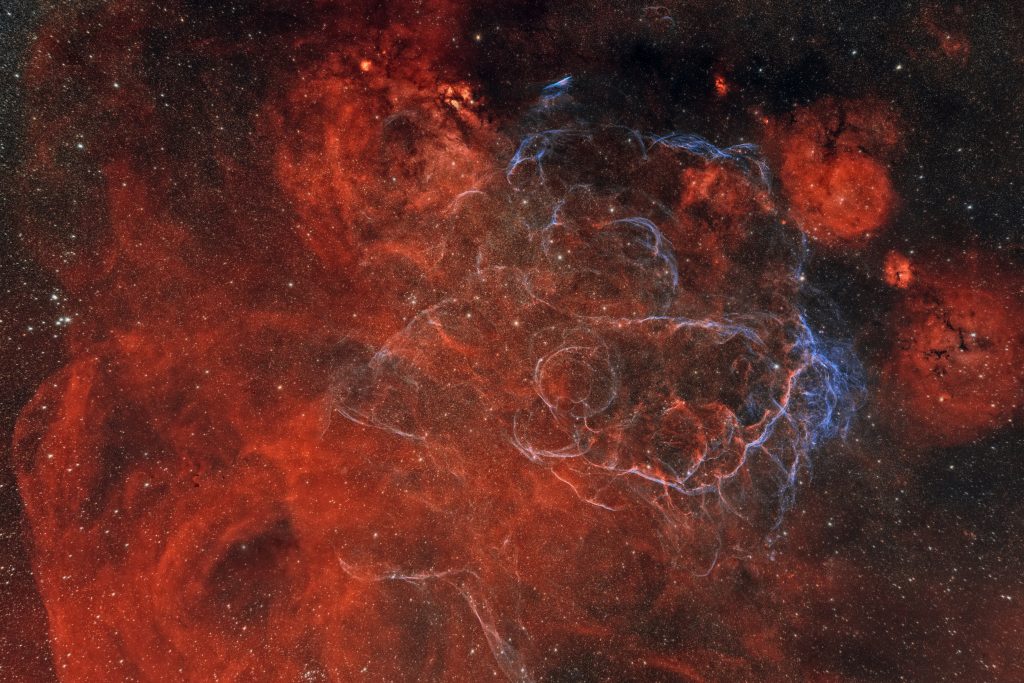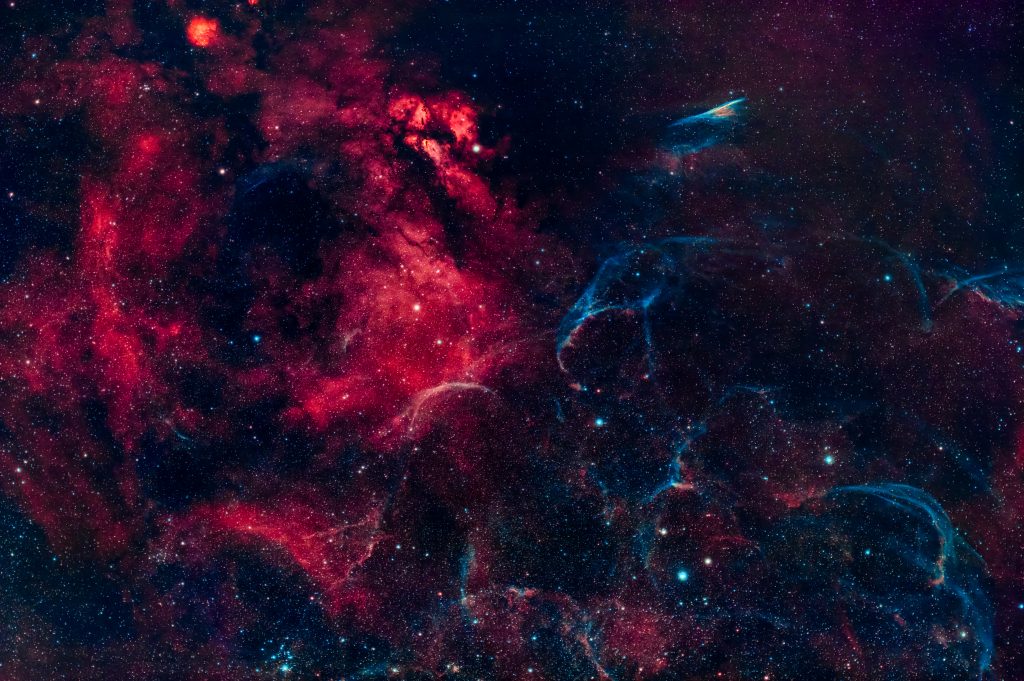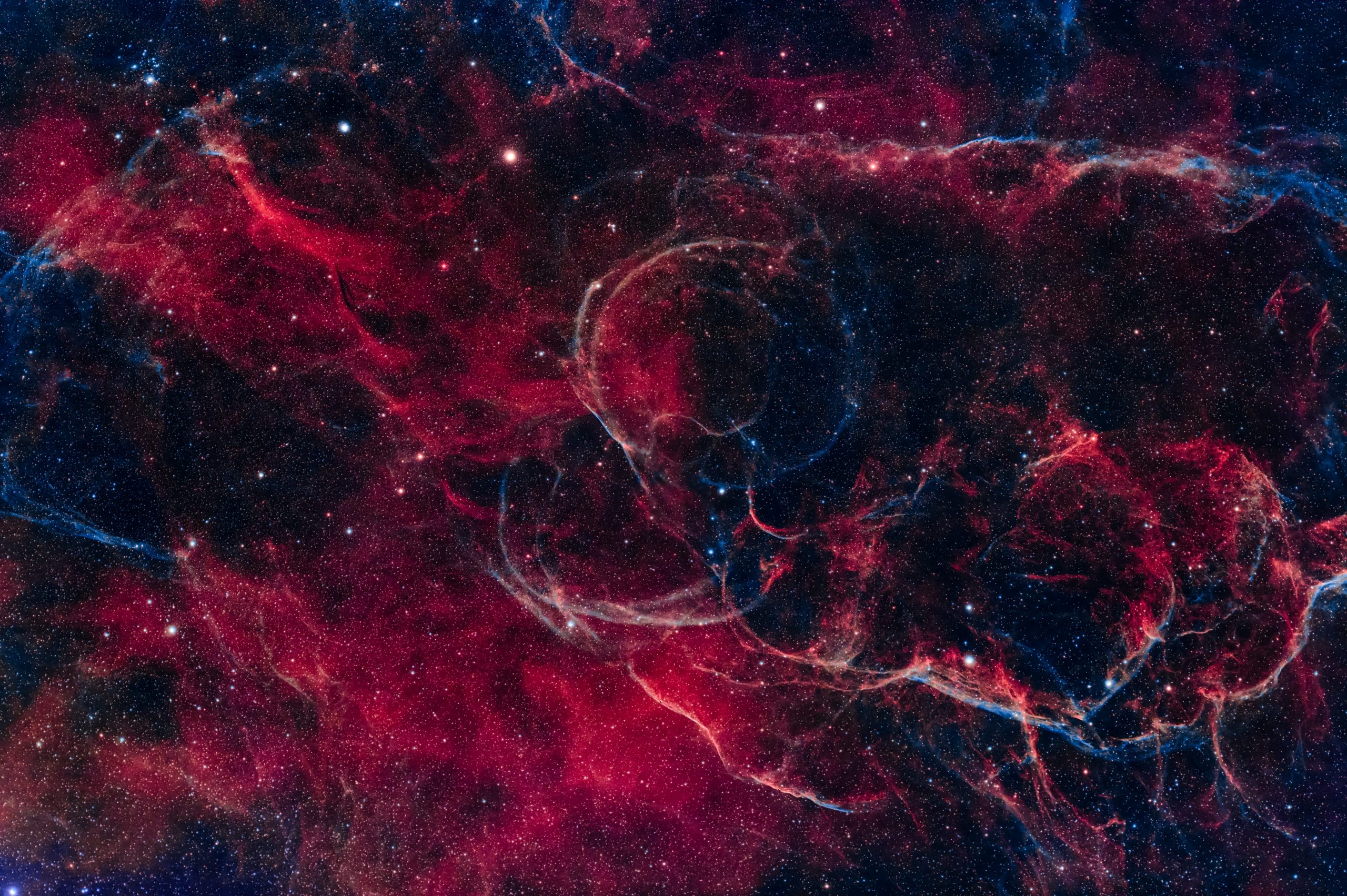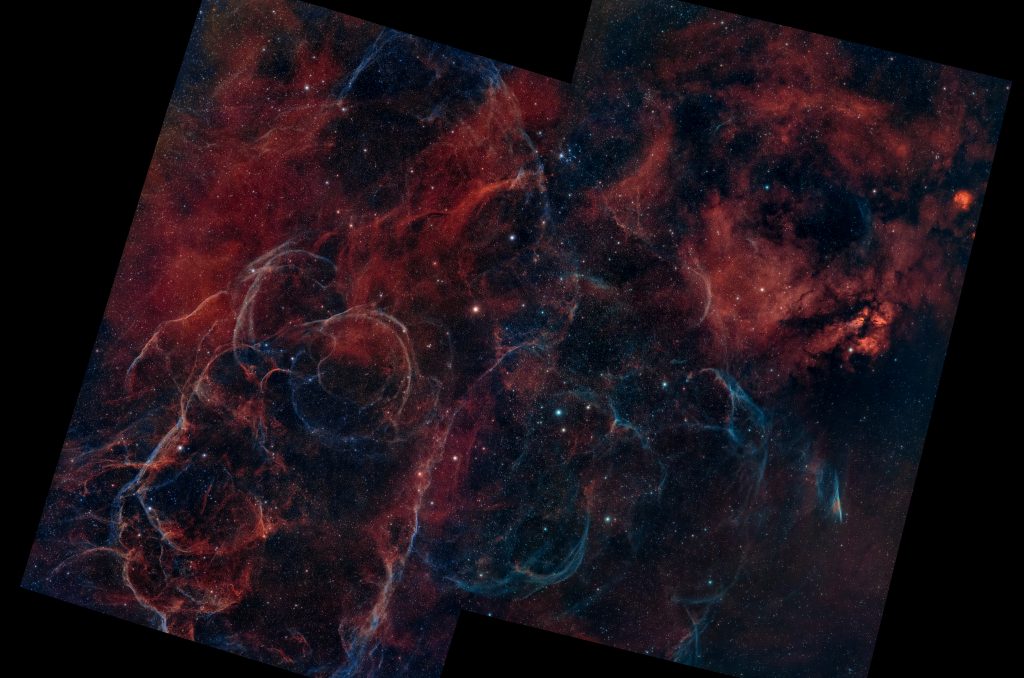The Vela Supernova Remnant Nebula emerged from the explosive demise of a massive star, scattering its outer layers across space. Filamentary structures, shaped by shockwaves and magnetic fields, intertwine throughout the nebula, painting an intricate cosmic tapestry.
Radiating vibrant hues of red, green, and blue, the nebula’s ionized gases create a stunning visual display. Observations reveal delicate wisps of gas, shock fronts, and remnants of the original star, including a pulsar emitting electromagnetic radiation.
The Vela Supernova Remnant Nebula showcases the grandeur of stellar cataclysms. Its intricate structure and vibrant colors captivate observers, urging us to ponder the forces that shape our universe. Explore this cosmic masterpiece and unlock the mysteries of our celestial past.
I had to revisit this deep-space object with a much shorter focal length and a much bigger CMOS sensor. Last year it simply didn’t fit in the field of view.

| Telescope | Samyang 135 mm F2 @f2.4 |
| Aperture | 67.5 mm |
| Focal length | 135 mm |
| Mount | iOptron Skyguider Pro |
| Autoguiding | ZWO 174MM, QHY Mini Guide Scope |
| Camera | ZWO 6200MC @-10°C |
| Filters | IDAS NBZ 2″ |
| Exposure | 88x300s, Gain 100, bin 1×1, |
| Date | 2023-05-15 |



